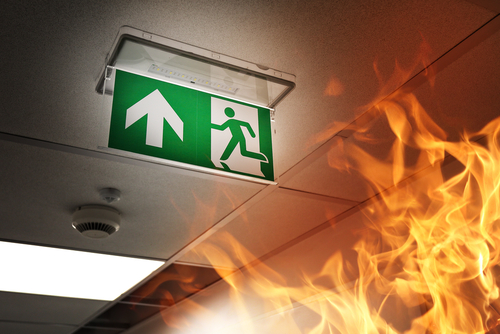Local fire departments responded to an estimated 1.5 million fires in the United States in 2022 that cost approximately $18 billion in property damage, according to the most recent Fire Loss report from the National Fire Protection Association (NFPA). In addition to the human impact of fire damage, property damage and the required reconstruction are costly for facilities managers.

The NFPA celebrates Fire Prevention Week (Oct. 6-12) annually to educate people about the risks of fires and how to minimize them. As the safety and compliance specialist at Barge Design Solutions with a background in firefighting, I am well-versed in the importance of effective fire safety plans for the construction industry and critical infrastructure in general. In this article, we’ll explore common safety violations in facilities and what you can do as facilities managers to prevent violations.
Common Fire Safety Violations Across Facilities
The first step to implementing an effective fire safety plan is to understand the most common fire safety violations, which vary across sectors.
In architecture, engineering, and construction projects, violations tend to include:
- Improper storage of construction materials;
- Accumulation of combustible waste;
- Lack of regular inspections of fire prevention systems; and
- Impaired fire detection and suppression systems.
In educational environments, we tend to see the following:
- Blocked or obstructed exits;
- Failure to maintain fire doors; and
- Inadequate emergency lighting.
In healthcare settings, common violations include:
- Improperly stored flammable materials;
- Malfunctioning fire suppression systems, like sprinkler heads; and
- Outdated alarm systems and inefficient egress markings, especially in federal buildings.
We see these violations year after year in facilities. Creating a plan that is easy for everyone in your organization to understand will lead to greater compliance with fire safety standards.
Elements of a Strong Fire Safety Plan
When implementing a fire safety plan, the first step is ensuring clear egress paths, visible emergency signage, and ample education so occupants are familiar with evacuation routes. Across all building types, these are five key elements of a fire safety plan:
- Clear and Accessible Evacuation Routes and Maps: This is critical in educational and healthcare facilities where mobility challenges or panic can complicate evacuation. Ensure clear evacuation routes and review your action plan annually to evaluate accessibility for all occupants.
- Fire Detection and Suppression Systems: Set up your spaces with smoke detectors, fire alarms, and sprinkler systems. Regularly test and maintain these systems.
- Regular Fire Drills and Training Programs: Fire drills and training programs should be tailored to the specific risks of your building and occupancy types. In healthcare environments, this should highlight practices for evacuating patients who are bedridden. In educational environments, this includes protocols to keep students calm.
- Emergency Communication Systems: Emergency communication systems are critical to promptly notify occupants of a fire. This is particularly vital in federal buildings that often have complex security requirements.
- Routine Inspections and Maintenance: Regular inspections and maintenance updates should take place to ensure your equipment meets fire safety standards and that building occupants are well protected in case of emergency.
Integrating Fire Safety Plans & Keeping Up with Code
Fire code is constantly evolving as those in the industry look to new methods to keep buildings and those within them safe. To achieve effective, company-wide communication that is in line with current code, implement systems that can instantly notify occupants of emergencies. At Barge, we use a mass communication platform that immediately notifies employees of emergent events and provides information about how to prepare, respond, and act. This global system enables us to communicate important information to employees anytime and anywhere.
Today, we have access to more fire safety technology than we did five years ago—like the mass communication platform we use internally. Across the construction, education, and healthcare industries, this has led to advancements in the materials we use to improve building fire resistance, a stronger focus on crowd management, and more stringent measures to protect occupant vulnerabilities.
As fire safety codes evolve and new protective measures emerge, be ready to adapt and ensure protection for your building and its occupants. For those responsible for their buildings’ fire safety plans, this means it is critical to stay up to date with the latest changes and ensure they are effectively implemented in your organization.

Lee Mullins is the safety and compliance specialist at Barge Design Solutions. Mullins has experience with health and safety enforcement in government administrations, AEC, and the environmental sector.
ALSO READ: Fire Sprinkler Maintenance Tips to Protect Your Facility
